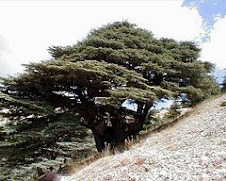One of the most important issues requiring the attention of the new President of the USA will be ensuring the safety of the honeybee population and thus America's food crops.
From LandLineMag.com:
SPECIAL SERIES: Bee crisis – OOIDA member credited with discovery
Editor’s note: Staff Writer Clarissa Kell-Holland searches for answers from OOIDA member David Hackenberg of Lewisburg, PA, who is credited with discovering colony collapse disorder or CCD, a mystery that is decimating bee hives worldwide. (To read Part One click here. For Part Two click here.)
Part Three: Lawsuit filed on behalf of honeybees
OOIDA Member and beekeeper David Hackenberg and other beekeepers he talks to regularly are worried that a seed treatment being used in corn and soybeans is slowly poisoning their bees. The treatment, known as neonicitinoid, is a nicotine-based product that became readily available in the U.S. around 2004, about the time he and other beekeepers started noticing a decline in their bees’ immune systems.
His beekeeper contacts in Canada started noticing problems with their bees in 2002, according to Hackenberg, after neonicitinoid insecticides were used on potato crops in Eastern Canada. Then clover was planted on that same land the next year for cover crop. The neonicitinoid wasn’t being used on crops in the U.S. at that point, so when his Canadian beekeeper friend called to tell him this new chemical seemed to be “killing his bees,” Hackenberg told him it was “probably just mites.”
But when the product started becoming widely used in the U.S. around 2004, Hackenberg said he started noticing his bees’ immune systems were weakening. It wasn’t until CCD hit his hives in 2006, though, that he focused on insecticides as a possible source.
In August of 2008, the Natural Resources Defense Council filed a lawsuit against the U.S. Environmental Protection Agency to force it to disclose studies that were supposed to be done on the effect pesticides are having on honeybees.
In 2003, EPA granted a registration to a new pesticide called clothianidin, manufactured by Bayer CropScience. Josh Mogerman, public information officer for the NRDC, said registration came with a caveat that the company study its product’s effects on the bees.
Mogerman told Land Line Magazine in August that the NRDC filed the lawsuit only after the EPA failed to respond to a Freedom of Information Act request, filed on July 17.
He said the EPA still has not provided the studies Bayer CropScience was to have completed at least two years ago. Those studies could be an important resource for scientists and researchers studying CCD.
“The federal government needs to do much more to address why these bees are dying and disappearing,” Mogerman said.
Germany and France have both banned the pesticide product, known as clothianidin, because of concerns about its impact on bees. CCD has also been reported in Canada and Italy as well.
The British Beekeepers’ Association is reporting that one in three honeybees did not survive winter and spring, although it has not yet been confirmed that CCD is the source of the problem.
Mogerman said scientists on staff at the NRDC say there is a possible connection between clothianidin and honeybees’ collapse.
“If you read up on what this product is supposed to do to pests, it is supposed to compromise their nervous system and limit their ability to navigate. And that’s one of the things that is central to CCD,” he said.
After losing a significant number of bees in the previous two seasons and having to pump a huge amount of money back in to keep his beekeeping business operating, Hackenberg has seen his fuel costs and operating costs go up as well.
“In the U.S., we truck a lot of bees,” he said. “Most people don’t have the foggiest idea what goes on and how much bee movement there is in this country.”
Currently, many beekeepers are planning to go to the West Coast for the almond pollination. Hackenberg estimates that beekeepers will truck between 1 million and 2 million hives of bees out to California this year to pollinate the almond crop. That breaks down to about 500 hives loaded on each truck.
There are few opportunities for backhauls when you are hauling bees, especially on short runs like to Maine for blueberry pollination, Hackenberg said. He said he’s paying on average about $3.50 per mile to get his freight moved.
Adee Honey Farms – one year later
Richard Adee of Adee Honey Farms owns the largest beekeeping operation in the U.S. He lost more than 40 percent of his bees that he trucked out to California in the fall of 2007 in preparation to pollinate the almond crop, which starts in early February.
Around Dec. 1, 2007, he said his bees were looking real “nice,” but Adee said things went downhill quickly from that point.
“All of a sudden they started collapsing through the rest of December and through most of January and early February, so it was a big hit,” he said. “We lost a lot of them before they started pollinating the almonds, so we had to scramble all over the U.S. to find bees to fill our contracts, which we were fortunate to do. That really takes a toll on a person.”
Online article about Beehives Colony Collapse Disorder - Part Three
Land Line Article Part Two: Toxic cocktail may be causing bee collapse
LandLineMag.com Article Part One: What’s happening to our bees?
From ResponseSource.com:
The honeybee crisis: paradoxical findings deepen the CCD mystery
Submitted by: Palam Communications
Wednesday, 22 October 2008
Vita urges beekeepers to become more proactive to prevent bee deaths
Beekeeping practices must change to ensure that honeybees survive and thrive, says Dr Max Watkins of Vita (Europe) Ltd, the honeybee health specialist, following one of the worst honey harvests in the UK and Northern Europe for many years. Although poor weather conditions may have badly affected the harvest an array of unexplained research findings indicates a more sinister and long-term challenge.
In recent decades, beekeeping has had to change radically to cope with the arrival of the varroa mite, a honeybee parasite. Minimalist or reactive management is no longer enough. Now with the threat of CCD (Colony Collapse Disorder) and other unexplained colony deaths, beekeepers must now become more vigilant and pro-active and use emerging pre-emptive bio-technologies from trusted sources to avert beekeeping catastrophe.
“Although the bad weather has had a significant impact on reducing this year’s UK honey harvest by something in the order of 30-50%, something more complex is afoot,” said Dr Max Watkins, Technical Director at Vita (Europe) Ltd. “I have never before seen so many paradoxical research findings and anecdotal reports in beekeeping.
“Although I firmly believe that varroa is at the core of the problem, the developing interplay of other factors while unsettling for beekeepers, is fascinating yet perplexing for researchers. The answers can only come from a thorough scientific approach. Investigations are underway across the globe and many suspects and accomplices are under suspicion – viruses once of little consequence are now becoming more prominent killers, but a clear pattern is elusive. One novel line of enquiry in Israel is focusing on “gene silencing” in an attempt to suppress the expression of bee viruses in the honeybee genome.
“Controlling varroa is now merely the first – and still absolutely essential – line of defence. Other action is also now necessary to keep colonies healthy. As a honeybee health company we are investing heavily in researching new bio-technologies and treatments. Already we have introduced two Vita Feeds to boost honeybee immune systems and all-round health, and we are now developing several new potential products which we expect will become vital weapons in the beekeeper’s armoury. One strand of our R&D is focusing on new alternative anti-varroa treatments and another is looking at ways of inhibiting microbes which are implicated in the death of colonies.”
The array of strange recent findings, many of them aired at the recent international conference of the Society of Invertebrate Pathology at the University of Warwick, UK, organised by Rothamsted IACR and sponsored by Vita, include:
Heavy bee losses are not new. They have been recorded several times during the history of beekeeping in the USA and Europe, with some symptoms similar to those attributed to what is currently termed Colony Collapse Disorder. Denis van Engelsdorp, Pennsylvania State Apiarist, USA recounted such experiences in American beekeeping history. Mike Brown of the National Bee Unit, UK, has also pointed out previously that largely unexplained heavy bee losses have occurred at intervals throughout Europe in the past. It may be that what is now termed Colony Collapse Disorder is not new at all, but is a variant of a recurring syndrome.
Viruses are implicated in CCD, but no single one has been identified as being “the cause”. Colonies with CCD apparently present with multiple viral infection, usually with four or more viruses: commonly Deformed Wing Virus (DMV), Israeli Acute Paralysis Virus (IAPV), Black Queen Cell Virus (BQCV), and Acute Paralysis Virus (APV) out of a total of 18 viruses discovered widely in US honeybee colony samples.
Varroa and nosema are also implicated in CCD and varroa saliva is now known to destabilise the immune system of honeybees. Dr Diana Cox-Foster of Penn State University, USA discussed this briefly in relation to the impact of viruses and other secondary infections where the bee’s immune system is already compromised.
Viruses can be found in almost all hive contents – and even in pollen on plants – before it enters the hive. Other pollinators, including wasps and bumble bees, have also been discovered to be infected with IAPV and DWV.
Viruses don't always debilitate: infection can be covert – Dr Elke Genersh of the Institut for Bee Research, Hohen Neuendorf, Germany showed that it depends on the threshold and the presence of infected varroa.
Full article on multiple causes of colony collapse disorder in beehives
Denmark’s Ritual of Militarisation
-
On December 8, 2025, the Copenhagen Security Summit convenes at Falkoner
Centret in Frederiksberg. With 35 speakers and more than 1,200
participants, it ...
7 hours ago


